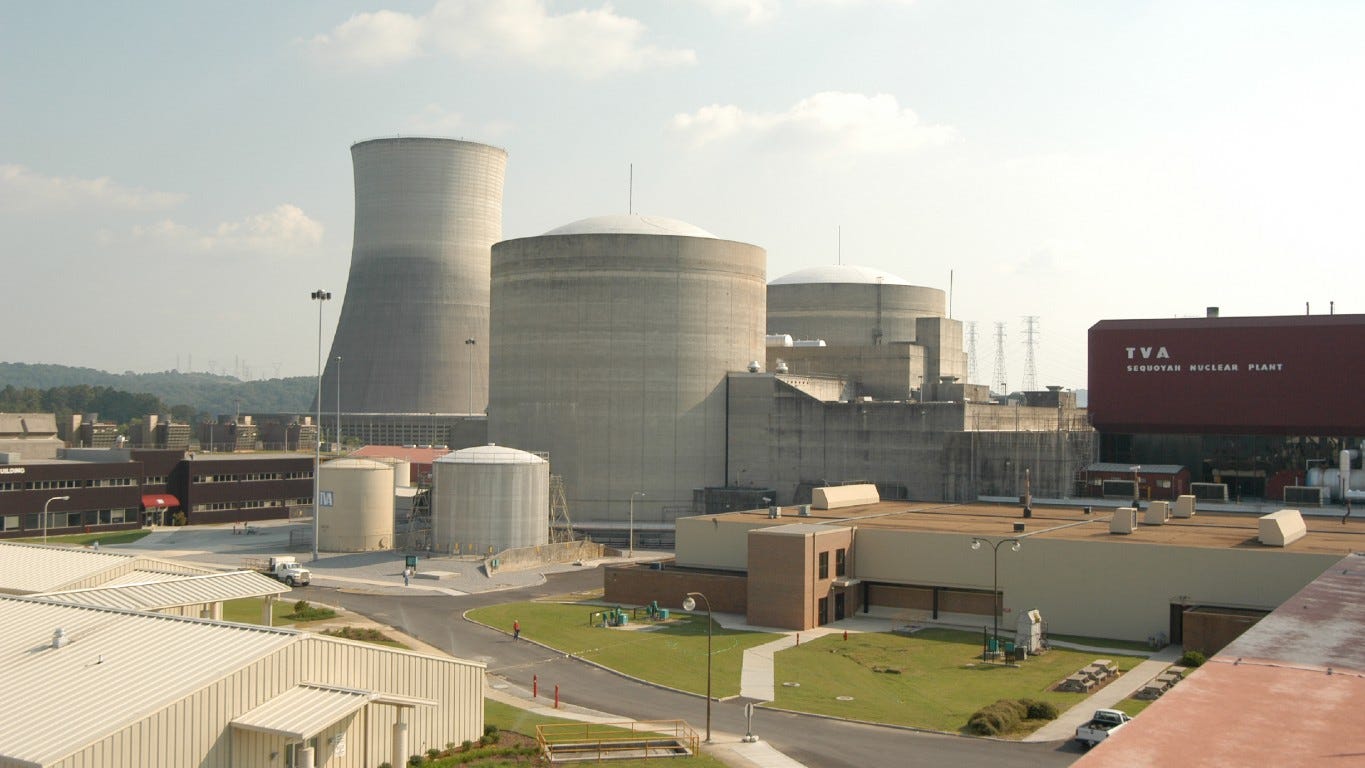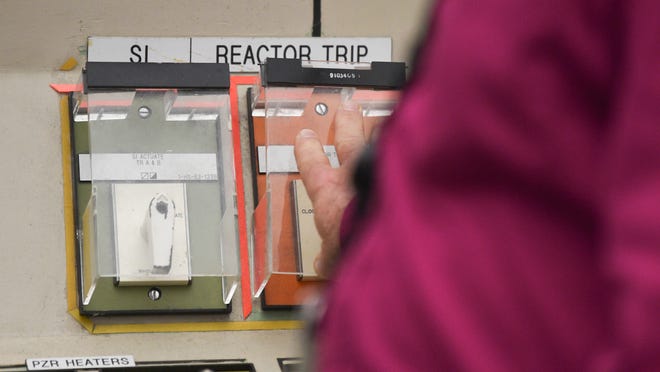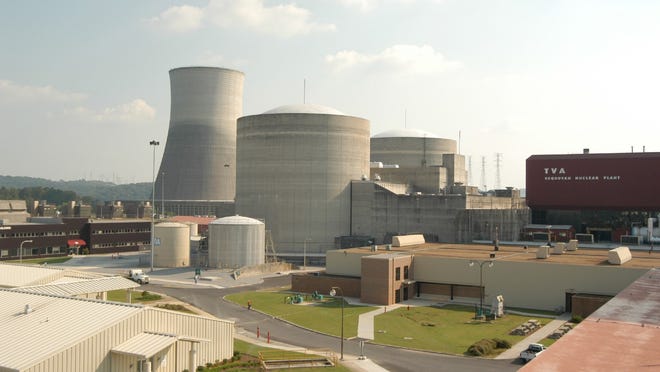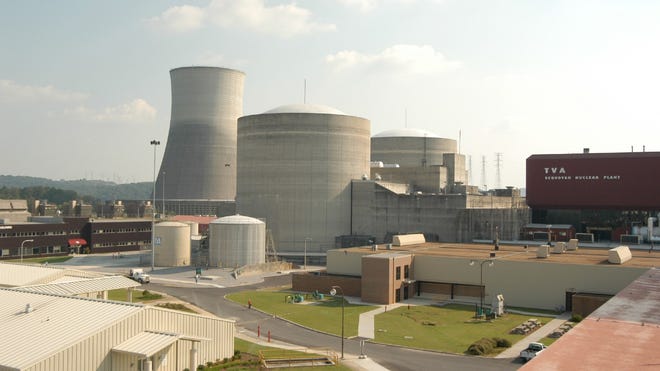
The workhorses of the Tennessee Valley Authority power system didn’t always work so well this year.
At each of the utility’s three nuclear plants, failure of electrical equipment led to what TVA classifies as forced outages, meaning operators cannot plan more than 10 days in advance for a unit to go offline, said Matt Rasmussen, TVA’s senior vice president of nuclear operations. They are separate from routine refueling and maintenance outages, which are planned far in advance.
The forced outages included one caused by the failure of a main generator at the Sequoyah Nuclear Plant outside Chattanooga that needs replacement and will not be online again until 2025.
The outages were not due to failures on the nuclear reactor side of the plants, but rather components of the secondary electrical side, like exciters and transformers.
TVA’s seven nuclear reactors across three plants – Browns Ferry in Alabama, Sequoyah and Watts Bar – are capable of generating enough electricity to power nearly 5 million homes and employ more than 3,000 people.
The nuclear plants are a source of pride for TVA, supplying 42% of its power in 2023, though the figure slipped to 39% this year, according to an annual financial report filed Nov. 14.
When electrical equipment failed at the Browns Ferry and Watts Bar plants, the federal utility was able to respond more quickly. Operators replaced a spare transformer at Browns Ferry and got the unit back online in 11 days, a fast turnaround by industry standards, Rasmussen said.
TVA nuclear generator will cost $82M to replace
TVA’s Sequoyah Unit 2, one of the plant’s two systems, tripped on July 30 after the main generator failed. The utility already planned to work on the generator as part of a $6 billion program to extend the life of its nuclear plants, but moved the project up after the outage.
The unit, which can generate enough power for about 675,000 homes, will be offline until the project is completed in spring 2025. Other sources of TVA power, like natural gas and pumped storage, will make up for the lost generation.
As of Sept. 30, the end of TVA’s fiscal year, the utility had spent $25 million on the Sequoyah generator project. It expects to spend an additional $57 million to complete it, according to TVA’s annual financial report.
The performance of particular parts of TVA’s workload, like finances and power plant operations, has a direct effect on how much its executives are paid.
After the utility missed the mark on its nuclear performance targets, TVA Chief Nuclear Officer Tim Rausch saw the smallest increase in compensation of the utility’s top executives. His $3.3 million total compensation was a 19% increase from last year.
TVA wants nuclear plants to run for 80 years
Browns Ferry, the most powerful single plant in TVA’s seven-state system, turned 50 in August. TVA submitted a license renewal application for the plant in January, which would extend its life 20 years after its current licenses for the three units expire between 2033 and 2036.
If approved, the Nuclear Regulatory Commission would extend Browns Ferry’s lifetime to 80 years, a milestone no nuclear plant has reached. The agency already has renewed licenses to 80 years for a handful of plants, including Florida Power & Light’s Turkey Point plant in Miami-Dade County.
TVA plans to submit license renewal applications for each of its nuclear plants.
After decades of safety concerns and underwhelming performance from its nuclear fleet, TVA investments led all seven units to be awarded a stamp of excellence from the Institute of Nuclear Power Operations for the first time last year.
“We put a focus on moving TVA’s nuclear fleet from what has chronically been a lower half of the industry in terms of performance to being top quartile, and we’ve been successful at that over the last five years,” TVA CEO Jeff Lyash said on a quarterly financial call.
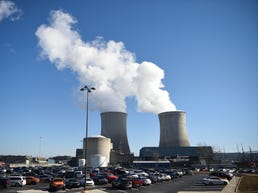
The forced outages at nuclear plants will not have an impact on TVA’s ability to receive 80-year operating licenses, Rasmussen said. The utility’s Nuclear Life Extension program, which will invest $6 billion by around 2038 in plant improvements, will move TVA closer to its ambitious goals.
“There will be very few pieces of equipment that are not touched and improved,” Rasmussen told Knox News. “We’re going to be the top nuclear fleet in the world. We don’t say that tongue in cheek, we mean that. We’ve proven that we can achieve that.”
To meet its goal of a net-zero carbon emitting grid by 2050, TVA is leaning not only on its traditional nuclear power plants, but also small modular nuclear reactors. The TVA Board of Directors has allocated $350 million for the development of the advanced nuclear technology at the Clinch River Site in Oak Ridge, which received an early site permit in 2019.
TVA plans to submit a construction permit to the Nuclear Regulatory Commission for the 300-megawatt GE Hitachi design in 2025 and could bring the first small reactors online in the early 2030s.
Daniel Dassow is a growth and development reporter focused on technology and energy. Phone 423-637-0878. Email daniel.dassow@knoxnews.com.
Support strong local journalism by subscribing at knoxnews.com/subscribe.
